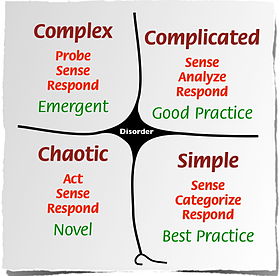 Engagement is fashionable concept, but most of al it’s a business management concept.
Engagement is fashionable concept, but most of al it’s a business management concept.
Employee Engagement is a measurable degree of an employee’s positive or negative emotional attachment to their job, colleagues and organization which profoundly influences their willingness to learn and perform at work
So behind this concept, what about social business ?
Manage through motivation and commitment of its employees is a real challenge. Arose motivation is an important lever in the performance of an organization. Of course it is obvious that no one can question this axiom, it’s better to get enthusiasm employees rather than demotivated. The question is how to maintain a commitment despite important external and internal constraints ?
That employees are involved, it is first and foremost trust because follow instructions of its hierachy blindness is not satisfactory. This trust  beyond simple slogan therefore requires three conditions:
- enable everyone to understand what it contributes
- enable everyone to contribute to the development of answers
- allow taking initiative and its corollary the right to make mistakes
Care must be taken to develop a shared vision for the project stay collective and make that people are involved. This allows everyone to have a clear understanding of the challenges ahead and accept the need for possible evolution. Because if decisions come from the management their applications result from employees, which is equally essential. It is the opposite of the labor division stemming from the Taylorism where everyone performs a « nonsensical » action and is disconnected from the corporate goals. Especially as a collective work, they have to understand what others are doing, to identify a possible malfunction or suggest improvements. To get invloved, everyone must understand what is expected of him. But for this, employees need:
- Be part of something motivating (vision)
- Give meaning to their commitment (project)
- Develop a feeling of belonging (community)
- Know that his work is recognized (impact)
You can see that through this four points, we find the essence of collaborative work in the company.
Share a vision is important and even more effective to contribute to the resulting strategy. This allows employees to understand it better, but also feel part of its realization. As Confucius said:
Tell me and I forget, show me and I may remember, involves me and I’ll understand !
If of course it is difficult to involve all employees in the development of the strategy, the role of leaders is to know when to consult and give them the floor (obviously if the communication is free and the expression of each respected and organized internally on a regular basis, it saves time and relevancy).
After the strategy, comes the operational. Create communities on issues to find solutions and innovations is effective. I spoke before of taking initiative and right to make mistakes, again these communities will be able to test new approaches and thus improve and improve the business (a kind of beta mode). Such practices will strengthen the motivation of your employees (and the links between them and the company) and involve them more in the success of the company. It’s not the opposite of the way companies work for the moment, it’ s in adddition to be able to answer to a more complex world, like Dave Snowden shows it through it’s Cynefin framework
This commitment by management, beyond the formulas thus requires:
- a greater transparency on behalf of the company,
- an effort to pedagogy and respect towards employees
- a less top-down management, but even more participatory and collaborative
- a right to initiative and error
More attractive and more rewarding working conditions for your employees lead to an increased performance for the company. Toyota has highlighted 14 lean management principle, we are more or less on the same vision, even when you read from the 9th to the 14th principle. So for sure engagement matters, when you are focus on business management point of view.

